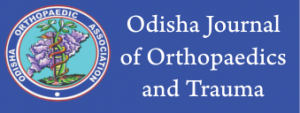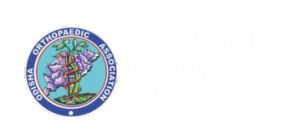A Rare Case of Osteoblastoma of Calcaneum with Secondary Aneurysmal Cyst Like Changes and its Management- A Case Report
Vol 03 | January 2022 | page: 50-53 | Arulkumar Nallakumarasamy, Rajkumar Arya, Ajit Singh, Rahul Yadav, Devanshu Mohaniya
DOI: https://doi.org/10.13107/ojot.2022.v03i01.034
Authors: Arulkumar Nallakumarasamy [1], Rajkumar Arya [1], Ajit Singh [1], Rahul Yadav [1], Devanshu Mohaniya [1]
[1] Department of Orthopedics, Institute of Medical Sciences, Banaras Hindu University, Uttar Pradesh, India.
Address of Correspondence
Dr. Arulkumar Nallakumarasamy,
Department of Orthopedics, Institute of Medical Sciences, Banaras Hindu University, Uttar Pradesh, India.
E-mail: arulmmcian@gmail.com
Abstract
Background: Osteoblastoma is a rare bone forming neoplasm and it is very rare to present with secondary cystic changes that too in the heel bone. The incidence is <0.6 % among all and its prevalence is yet to be reported in our population. owing to its rare presentation the early diagnosis of Osteoblastoma of calcaneum with secondary aneurysmal cyst like changes are difficult and hence affects the outcome.
Material: In this report we detailed the diagnostic methods and surgical management of osteoblastoma of calcaneum associated with secondary aneurysmal cyst like changes in a 12year old boy with 2 year follow up.
Result: It shown that the expansile lytic lesion was healed at appropriate time period and ankle & subtalar range of movements were satisfactory with no limitation in inversion and eversion.
Conclusion: Benign expansile bone tumors in heel bone are difficult to find in the literature. This study addresses the diagnostic modality, proper surgical management in terms of approach and using sandwich bone grafting technique to improve the long term functional outcome.
Keywords: Osteoblastoma of calcaneum, Secondary aneurysmal cyst like changes, Curettage and bone grafting.
References
1. Mcleod RA, Dahlin DC, Beabout JW. The spectrum of osteoblastoma. AJR Am J Roentgenol. 1976;126 (2): 321-5.
2. Amacher AL, Eltomey A. Spinal osteoblastoma in children and adolescents. Childs Nerv Syst. 1985; 1:29–32.
3. Huvos AG. Bone tumors: Diagnosis, treatment and prognosis. Philadelphia: W.B Saunders Co; 1979. pp. 33–46.
4. Zileli M, Cagli S, Basdemir G, Ersahin Y. Osteoid osteomas and osteoblastomas of the spine. Neurosurg Focus. 2003;15:E5.
5. Saccomanni B. Aneurysmal bone cyst of spine: a review of literature. Arch Orthop Trauma Surg. 2008;128: 1145–7.
6. Marco Pavanello , Ilaria Melloni , Pietro Fiaschi , Alessandro Consales , Gianluca Piatelli , Marcello Ravegnani , Paolo Nozza , Carlo Gandolfo , Armando Cama. A rare case of osteoblastoma associated to aneurysmal bone cyst of the spine. Case report. Br J Neurosurg. 2016;30(1):106-9.
7. Hongtao Hu , Jianxin Wu , Liang Ren , Xianze Sun , Feng Li , Xiaojian Ye. Destructive osteoblastoma with secondary aneurysmal bone cyst of cervical vertebra in an 11-year-old boy: case report. Int J Clin Exp Med. 2014 Jan 15;7(1):290-5.
8. Mishra A, Pruthi N, Nandeesh BN, Shukla D. Cervical Spine Osteoblastoma with an Aneurysmal Bone Cyst in a 2-Year-Old Child: A Case Report. Pediatr Neurosurg. 2019;54(1):46-50.
9. Balancing spinal stability and future mobility in the cervical spine: surgical treatment of a case of osteoblastoma with secondary aneurysmal bone cyst. Ramme AJ, Smucker JD.Spine J. 2011 May;11(5):e5-12.
10. Tarantino R, Piccirilli M, Anichini G, Delfini R. Benign osteoblastoma of the odontoid process of the axis with secondary aneurysmal bone cyst component: a case report. Neurosurg Rev. 2008; 31:111–5.
| How to Cite this Article: Nallakumarasamy A, Arya R, Singh A, Yadav R, Mohaniya D | A Rare Case of Osteoblastoma of Calcaneum with Secondary Aneurysmal Cyst Like Changes and its Management: A Case Report | Odisha Journal of Orthopaedics and Trauma | January 2022; 03: 50-53. https://doi.org/10.13107/ojot.2022.v03i01.034 |
(Abstract Text HTML) (Download PDF)


